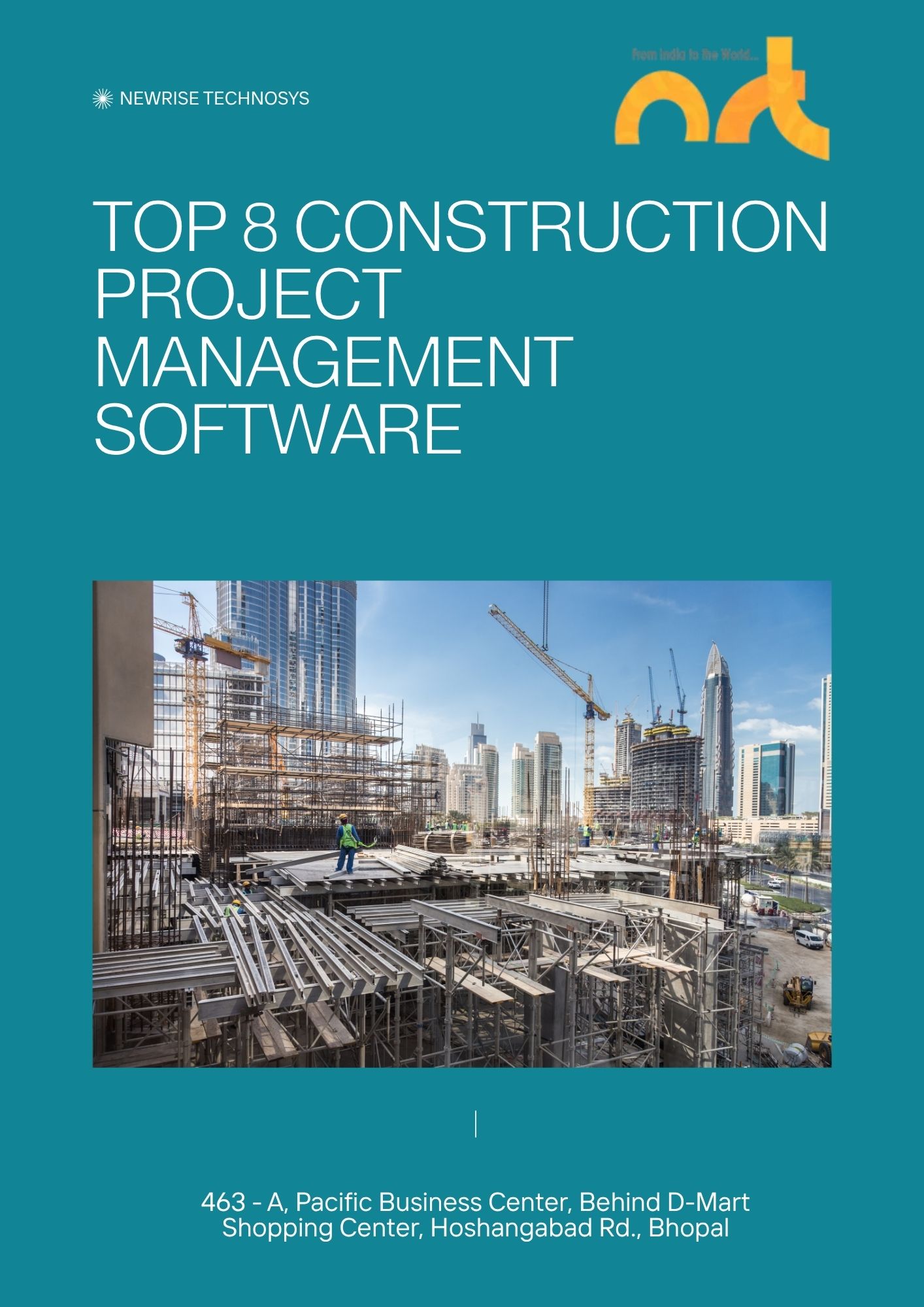Ask anyone who’s worked on a construction site, and they’ll tell you—managing a project is never just about blueprints and bricks. It’s a chaotic mix of people, machines, material delays, billing confusion, unplanned hindrances, and tight deadlines. And if you’re still relying on Excel sheets or WhatsApp messages to run your site, you’re not just behind the times, you’re leaving money on the table.
The good news? 2025 has brought a fresh wave of construction project management software that actually understands the industry. Not just for the office folks, but for the ones wearing safety helmets and dealing with real issues on-site.
After talking to site engineers, contractors, and real users, we’ve curated a list of the Top 7 Construction Project Management Tools that are changing the game, ranked based on practicality, cost, features, and field-friendliness.
1. Silicon Bricks – Designed On-Site, Not Just in Boardrooms
Let’s be honest. Most tools out there try to be everything for everyone—and end up being good for none. Silicon Bricks doesn’t make that mistake. It’s one of the few platforms that was clearly built from the ground up for real construction workflows.
Instead of bloating the software with 100 dashboards no one uses, Silicon Bricks focuses on what actually causes delays and cost overruns—hindrances, poor daily tracking, unclear task delegation, and invoice confusion.
What Stands Out:
- You can log on-site hindrances instantly, assign responsibility, and resolve them without WhatsApp chaos.
- The DPR tool actually makes daily reporting easy—upload photos, write notes, and mark progress in under 5 minutes.
- Task Hopper lets you break down project work into bite-sized, assignable tasks. (And yes, it even works if your team isn’t very tech-savvy.)
- The invoice tracker ensures you’re not chasing payments blindly. You’ll know what’s billed, approved, and pending.
We tested it on a mid-size highway construction project in Madhya Pradesh, and the field team shaved off nearly 20% of avoidable delays in just 3 months. That’s not marketing—it’s field reality.
If you want something practical, not corporate jargon-heavy, Silicon Bricks is probably the most field-friendly software out there right now.
2. Procore – The Giant That Covers Everything (And Then Some)
If your construction business has grown into a multi-city operation with layers of management and reporting, Procore might be your ideal fit.
It’s like the Rolls-Royce of construction management. Expensive? Yes. Powerful? Also yes. It connects architects, contractors, consultants, and field teams—all under one digital roof.
Good Stuff:
- Easily manage RFIs, drawings, bids, and submittals—without getting lost in email threads.
- Real-time document access, even on mobile
- Budgeting tools that integrate well with accounting systems
But be warned: If you’re a small firm or don’t have a full IT team to onboard everyone, Procore can be a bit of a beast to tame. It’s best suited for large commercial or infrastructure companies with deep pockets and structured teams.
3. Wrike – If You Like Gantt Charts, You’ll Love This
Okay, Wrike isn’t built just for construction folks, but hear me out. If you’ve got a team that’s already a bit tech-savvy and you want serious task-level visibility, Wrike is worth looking at.
Think of it as a blank canvas for managing complex construction workflows. You can create Gantt charts, Kanban boards, priority flags, deadlines—it’s like Trello on steroids.
Why It Works for Some Teams:
- You can customize workflows for contractors, vendors, or consultants.
- Their mobile app is slick and fast—great for architects or civil engineers on the move.
- Real-time notifications help avoid the “I didn’t know I had to do that today” syndrome.
That said, it’s not built specifically for field issues like DPRs or hindrance management, so if that’s your daily battle, Wrike might need a bit of tailoring.
4. Contractor Foreman – Affordable, Easy, and Surprisingly Powerful
If you run a small-to-mid-size construction business and don’t want to spend half your life learning a new platform, Contractor Foreman might be your sweet spot.
It’s budget-friendly and comes with more than 35 features out of the box. The best part? You don’t need a “tech guy” to set it up.
What Contractors Love:
- Pre-loaded safety meeting templates
- Simple client invoices and payment tracking
- Drag-and-drop scheduling tools
- Mobile timecards that your labour team will actually use
One thing people forget to mention: the support is quick and actually human, which goes a long way when your site is on fire and you need help now.
5. ClockShark – For When You Need to Know Who Was Actually on Site
Ever had a team member swear they were at the site by 8 AM… but CCTV tells another story?
ClockShark helps with that. It’s not a full-blown construction suite, but what it does—time tracking and crew scheduling—it does extremely well.
Highlights:
- GPS-based clock-in/clock-out
- Easy timesheet approvals for payroll
- Job costing tools that connect with QuickBooks
- Simple user interface, even for the less tech-friendly team members
For companies managing multiple crews or subcontractors, ClockShark brings clarity to confusion, especially when job sites are spread out.
6. RedTeam – If You Like Numbers and Control, You’ll Love This
RedTeam is one of those tools you don’t fully appreciate until you dig deep. It’s built by actual construction professionals, and you can tell.
The platform brings complete control over project financials, bid processes, and subcontractor management.
What It Nails:
- Preconstruction planning and bid tracking
- Centralized communication with vendors
- Strong cost forecasting tools
- Daily logs, RFIs, submittals—all under one roof
This isn’t for someone looking for a plug-and-play solution. It takes time to set up, but once you do, it feels like you have a full construction admin team inside your laptop.
7. Aurigo Masterworks – Made for Government Projects and Big Infra
Here’s the thing: If you’re bidding on government infrastructure projects, Aurigo isn’t just helpful—it’s almost necessary.
Built specifically for large-scale capital planning, Aurigo Masterworks is the go-to for municipalities, public works departments, and infrastructure developers.
Why Public Sector Loves It:
- Budget planning across years (not just months)
- Integrated citizen communication tools
- Regulatory compliance built-in
- End-to-end capital project lifecycle tracking
Let’s be real—it’s overkill for private residential or commercial builders, but if you work on railways, roads, or airports, this is your friend.
8. Archdesk – Sleek UI with Powerful Back-End Tools
A newer name, but Archdesk is gaining traction fast. It’s ideal for companies looking for modern design and strong back-office functionality.
Think of it as the Apple of construction software—clean interface, fast navigation, and deep features under the hood.
What’s to Like:
- Live project dashboards for real-time tracking
- Procurement and vendor management
- Document version control (great for architects)
- Budget forecasting with visual analytics
It’s great for mid-size firms doing interior work, fit-outs, or fast-paced commercial projects where visual updates and clean documentation matter.
Final Verdict: Which Construction Project Management Software Should You Use?
Let’s cut to the chase. If you want a tool that understands what it’s like to actually manage a real site—from weather delays to invoice confusions—Silicon Bricks is hands-down our top recommendation for 2025. It’s not bloated, it’s not confusing, and it solves exactly what construction teams struggle with daily.





